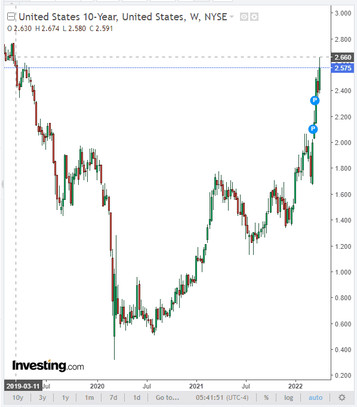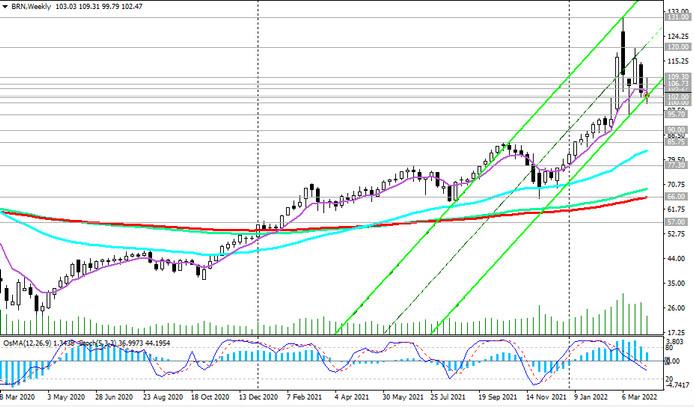Dollar buyers received good support yesterday. From the minutes of the March meeting of the Open Market Committee (FOMC) published on Wednesday evening, it follows that Fed leaders are set to tighten monetary policy more quickly. Market participants already in May expect the Fed to raise interest rates by 50 basis points at once, as well as launch a program of quantitative tightening in the amount of almost $100 billion a month. Fed officials also plan to begin the process of substantially reducing the central bank's balance sheet, estimated at up to $2 trillion.
Yesterday the dollar strengthened after the release of the minutes of the Fed's March meeting, and today it is also growing, while the DXY dollar index, which estimates the value of the dollar against a basket of 6 major currencies, reached a new local high of 99.84 at the beginning of today's European session, corresponding to levels of almost 2-years ago.

At the same time, US government bond yields also rose. Thus, the yield on 10-year bonds jumped yesterday to 2.658%, which is in line with March 2019 levels. A breakthrough by the DXY index of the psychologically important level 100 will entail more active purchases of the dollar, economists say.
Several Fed officials are expected to speak today (at 13:00, 18:00, 20:05 GMT), and they are likely to confirm the central bank's inclination for a tough policy.
While the dollar is rising, and market participants are waiting for its further strengthening and new signals from Fed officials regarding the prospects for US central bank monetary policy, the oil market is seeing some downward correction after prices reached a local multi-year peak in March amid events taking place in Ukraine.
Thus, the price of BRENT oil touched the mark of 131.00 dollars per barrel in early March, while futures for WTI oil exceeded the mark of 126.00 dollars per barrel. Today, oil quotes remain near a 3-week low, while oil market participants analyze information that the 29 member countries of the International Energy Agency (IEA) plan to release 120 million barrels from strategic reserves. Earlier, the US announced the sale of 180 million barrels of oil from reserves.

In addition, on Wednesday, the US Department of Energy reported an increase in oil reserves in the country's storage facilities by 2.421 million barrels after falling last week by 3.449 million barrels (according to the forecast, a decrease in stocks of -2.056 million barrels was expected).
However, oil market analysts believe that the oil released from the world's strategic reserves will probably not be enough to make up for the missing supplies from Russia, while OPEC+ is in no hurry to increase production volumes, acting according to a previously agreed plan. The oil coalition believes that the oil market is currently well balanced, and the current volatility is caused by geopolitical events.
In the meantime, we are seeing a downward correction in the oil market, it is likely that the current levels may be attractive for opening new deals and building up long positions.
Oil market participants will also pay attention to tomorrow's publication at 17:00 (GMT) of the latest weekly report from oilfield services company Baker Hughes on active oil platforms in the US.
Previous data from Baker Hughes showed an increase in the number of active rigs to 533 units (vs. 445, 433, 428, 421, 411, 401, 394, 410, 405, 397 in previous reporting periods). It is obvious that the number of oil producing companies in the US is growing again, which is a negative factor for oil prices. Their next growth will also have a negative impact on oil prices, however, it will only have a short-term character.





